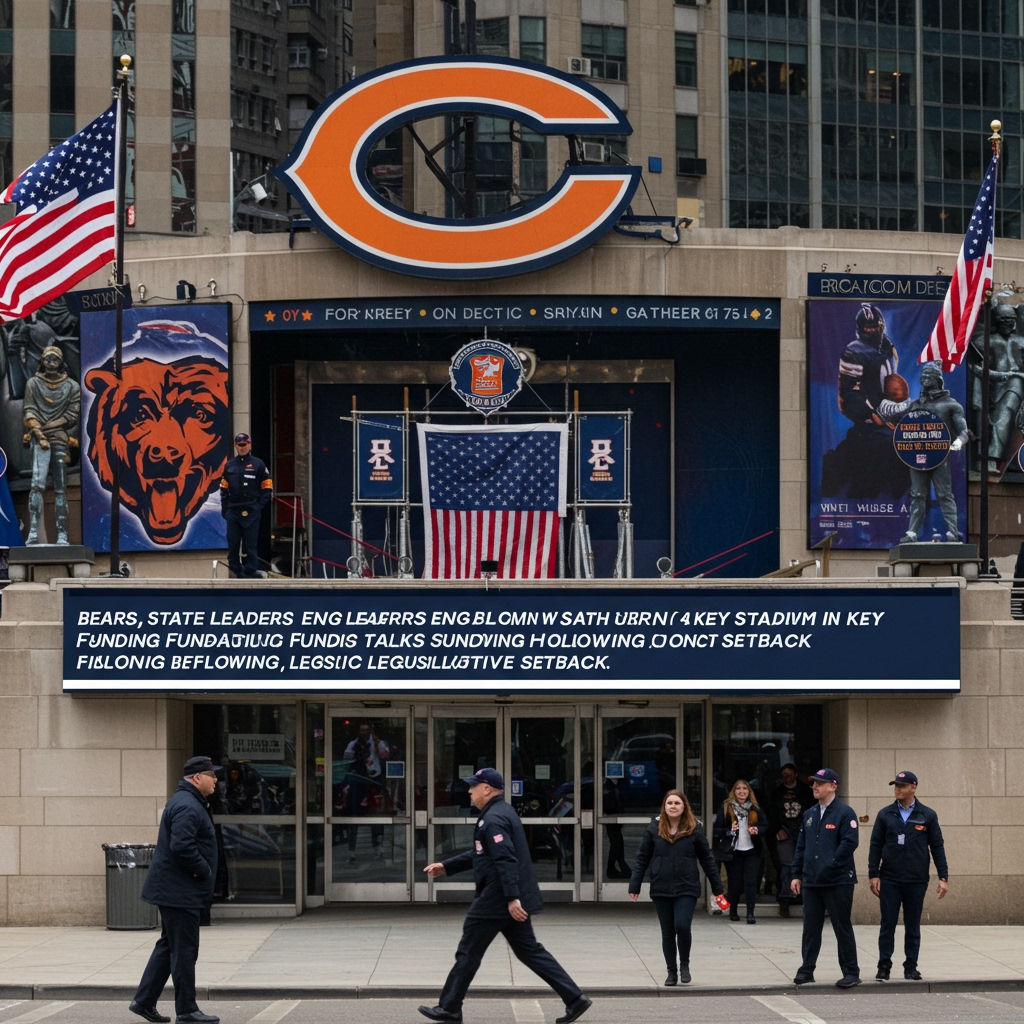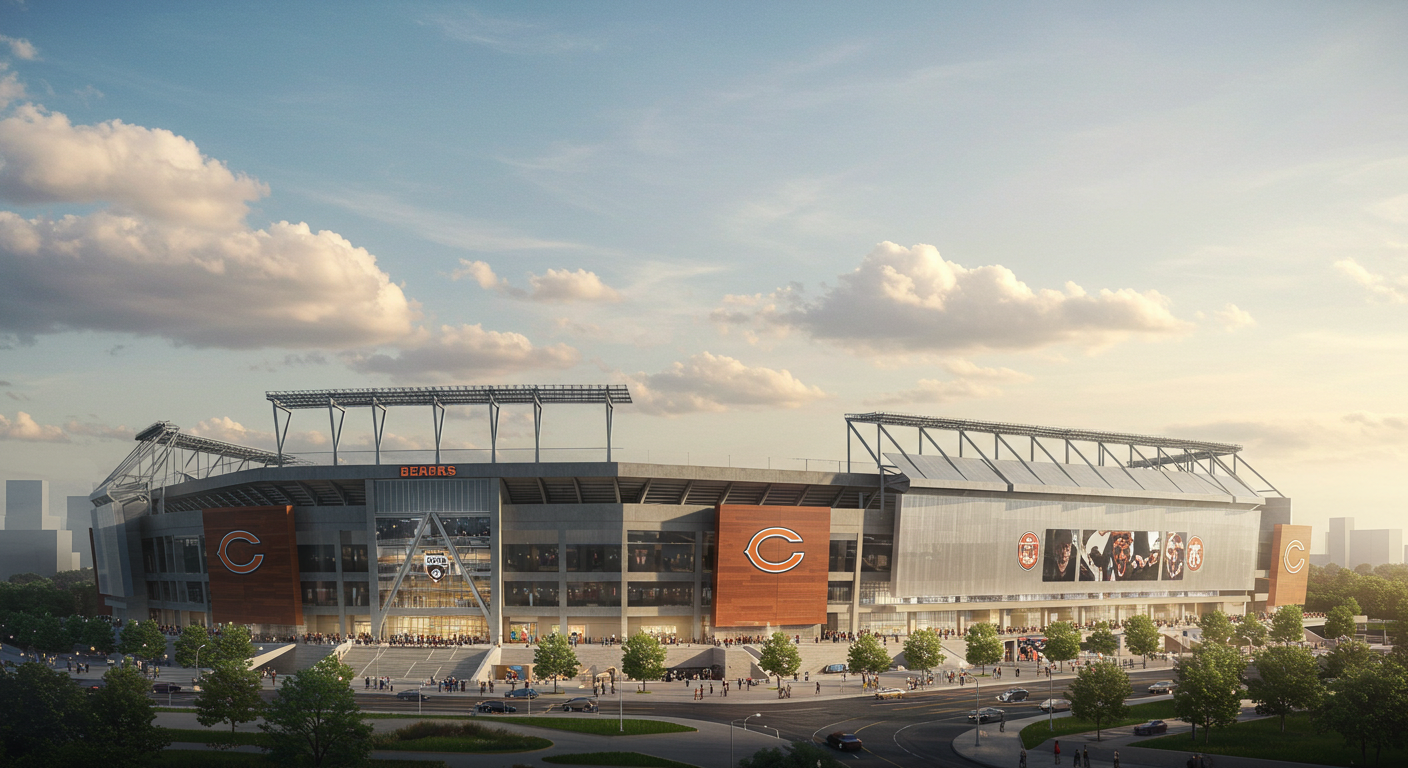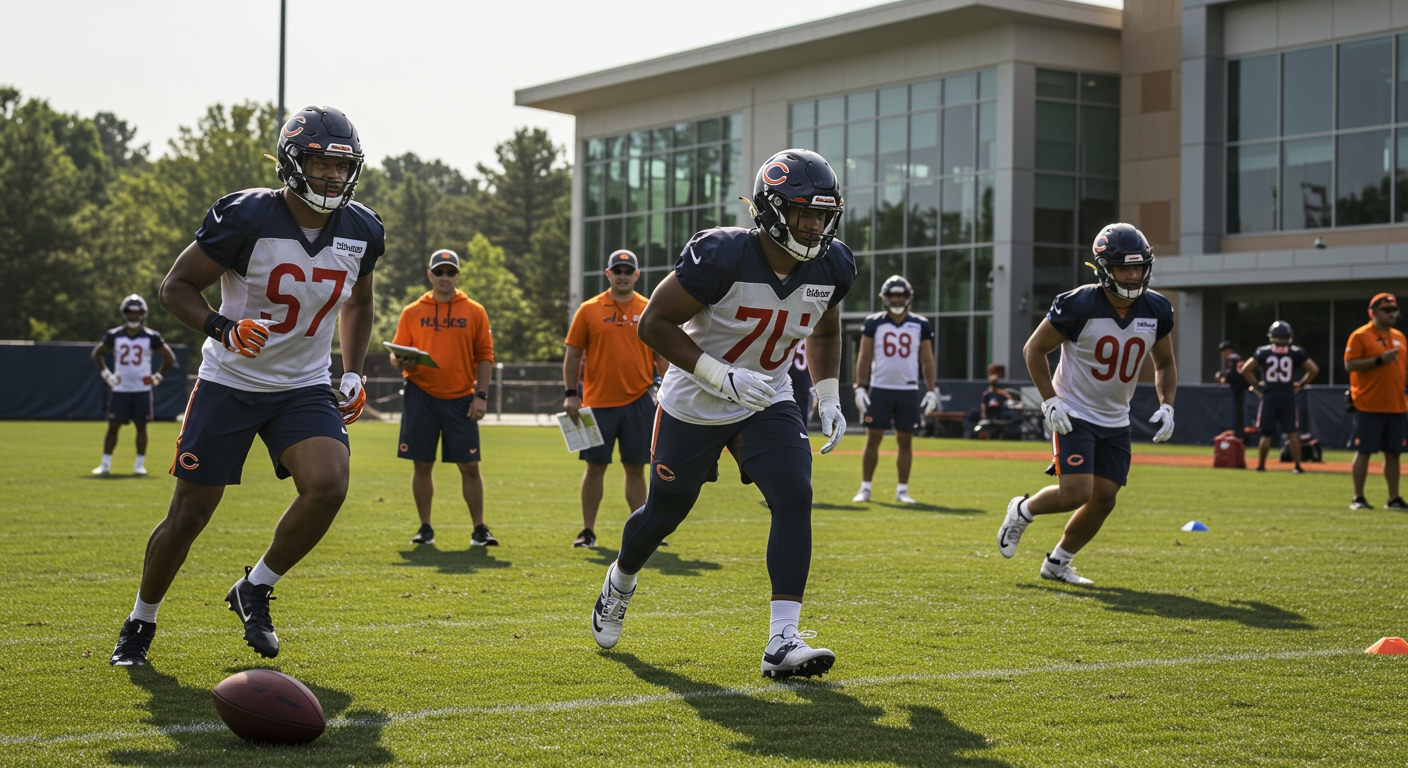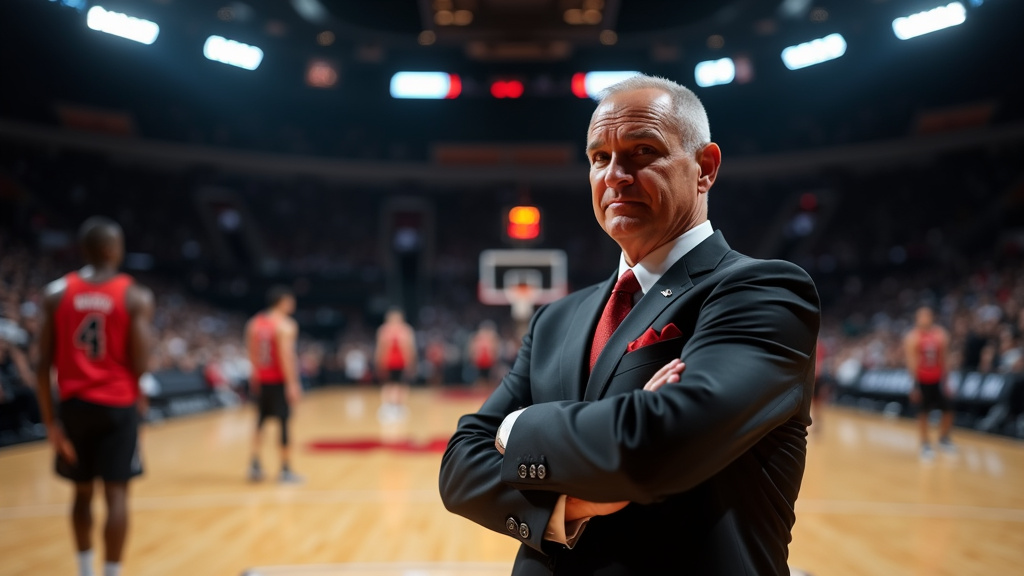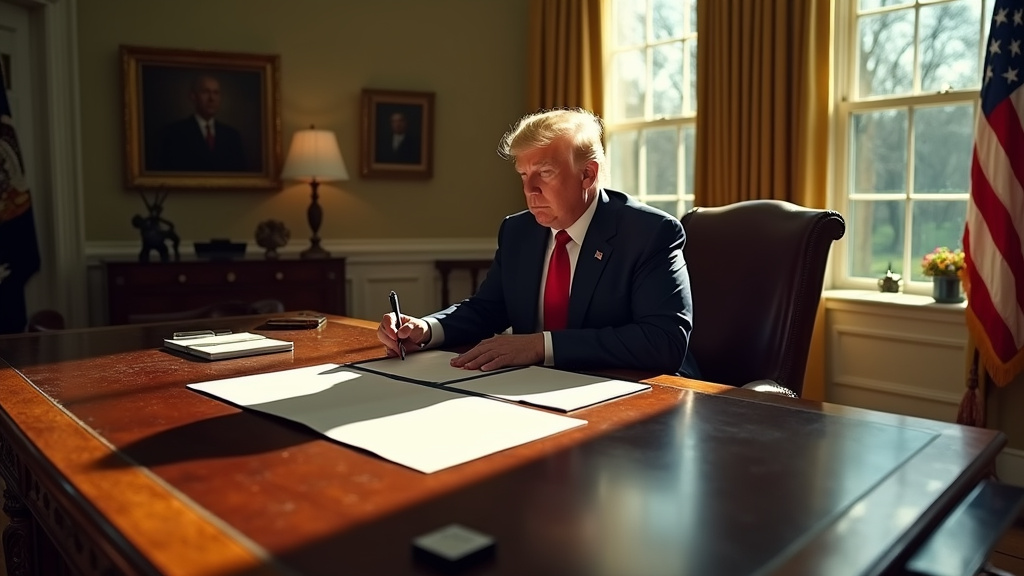Chicago Bears team president Kevin Warren, alongside other team executives, held a significant meeting with key Illinois legislative leaders at the State Capitol on April 23, 2025. The high-stakes discussion followed recent public pushback from Illinois Senate President Don Harmon regarding the team’s ambitious proposed $5 billion lakefront stadium financing plan. The meeting included direct engagement with both Senate President Harmon and House Speaker Chris Welch, indicating the critical nature of securing legislative support for any future stadium development in Chicago.
Background: The Bears’ Stadium Vision and State Hesitation
The Chicago Bears organization has been actively pursuing plans for a new, state-of-the-art stadium to replace their current home at Soldier Field. Their proposed vision centers on a substantial $5 billion development project located on the Chicago lakefront, a plan that extends beyond just the stadium to potentially include surrounding infrastructure and amenities. A crucial component of this proposal involves a request for significant public financial contribution or support, the specifics of which have been a subject of intense public and political scrutiny. Senate President Don Harmon had previously voiced considerable skepticism regarding the feasibility and appropriateness of committing substantial state funds to the project, particularly given other pressing state needs such as education, healthcare, and infrastructure elsewhere in Illinois. This legislative hesitation had cast a shadow over the Bears’ initial funding approach, necessitating a direct dialogue with state power brokers to navigate the path forward.
The April 23, 2025 Meeting: Exploring Alternatives
The meeting at the State Capitol on April 23, 2025, served as a crucial opportunity for the Bears to directly address legislative concerns and for state leaders to understand the team’s perspective and flexibility. According to reports, the discussion reportedly centered on exploring potential revisions to the initial financial model presented by the Bears. This included delving into alternative funding structures that might be more palatable to state legislators and address the specific concerns raised about the scale and nature of the public contribution requested. The objective was clearly to find a compromise or a revised framework that could potentially garner the necessary political support to advance the project.
Participants in the meeting engaged in a detailed exchange regarding the economic impact projections presented by the Bears, the potential benefits of a new stadium for the city and state, and the various mechanisms through which public funds could potentially be utilized or leveraged, while simultaneously exploring ways to mitigate the burden on state taxpayers. The dialogue aimed to bridge the gap between the team’s development aspirations and the state’s fiscal realities and priorities as articulated by leaders like Senate President Harmon and House Speaker Welch.
Outcome and Path Forward: Dialogue Continues
Despite the in-depth discussions held on April 23, 2025, no immediate concrete agreement or a revised, formal proposal emerged from the meeting. The complex nature of the financing, the significant public investment potentially involved, and the state’s existing budgetary constraints mean that finding a mutually acceptable solution requires significant negotiation and detailed analysis. However, the meeting was characterized by an apparent willingness on both sides to continue the dialogue. Both parties reportedly indicated a commitment to further discussions aimed at finding a viable path forward for the stadium project.
This commitment to ongoing talks is viewed by observers as a necessary step, acknowledging that the initial proposal faced significant headwinds and that a revised strategy is required. The legislative leaders reiterated the importance of protecting taxpayer interests while the Bears executives likely emphasized the economic potential and long-term vision associated with the $5 billion lakefront development. The lack of an immediate breakthrough underscores the challenges but the agreement to continue negotiating signals that the door remains open, albeit with significant hurdles still to clear.
The Clock is Ticking: Legislative Session Deadline
The urgency surrounding these discussions is heightened by the impending conclusion of the state legislative session, scheduled for later in May 2025. For any legislative action regarding potential stadium funding or authorization to occur within the current session, a revised proposal or a framework for agreement would likely need to materialize relatively quickly. The window for legislative approval is narrowing, adding pressure to the ongoing dialogue between the Bears and state leaders. The coming weeks will be critical in determining whether a revised funding model can be developed that satisfies both the team’s needs and the state’s fiscal and political requirements, potentially allowing for legislative consideration before the session adjourns. The future of the Bears’ proposed $5 billion lakefront stadium and its significant public component hinges on the success of these continued negotiations in the lead-up to the May deadline.


